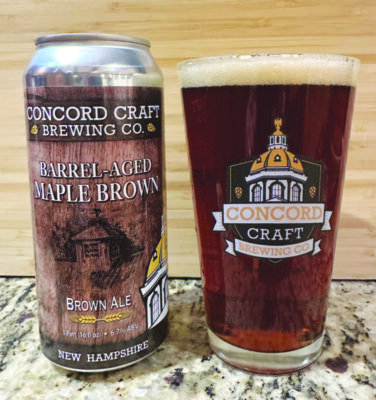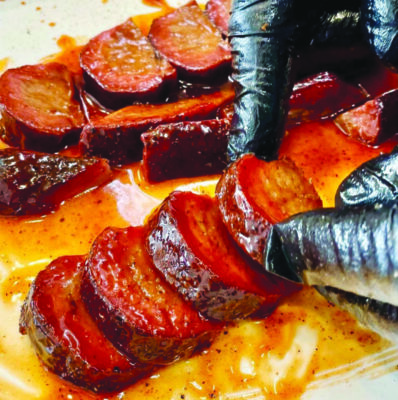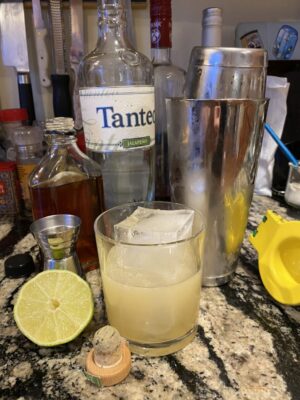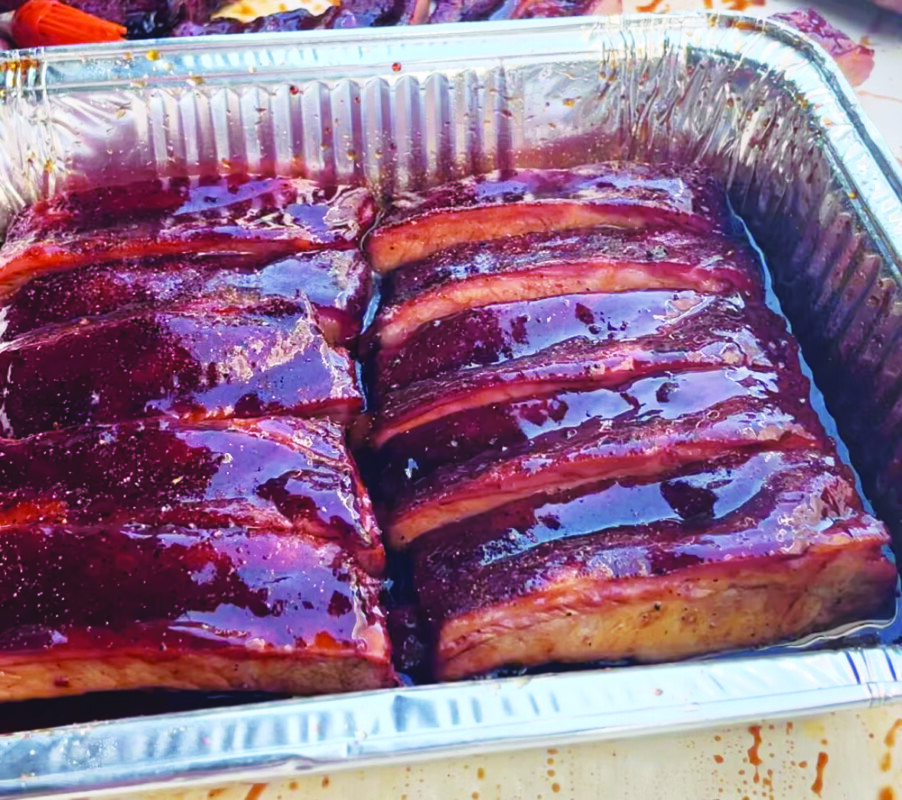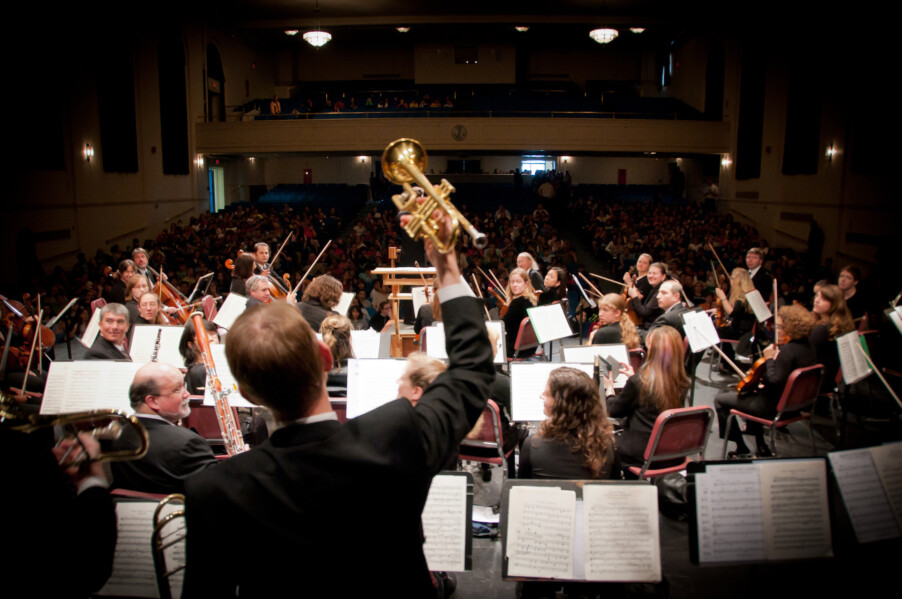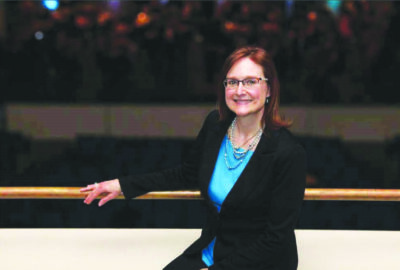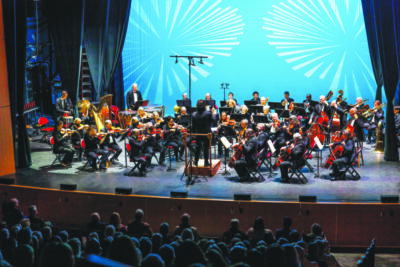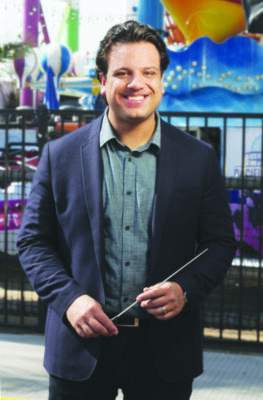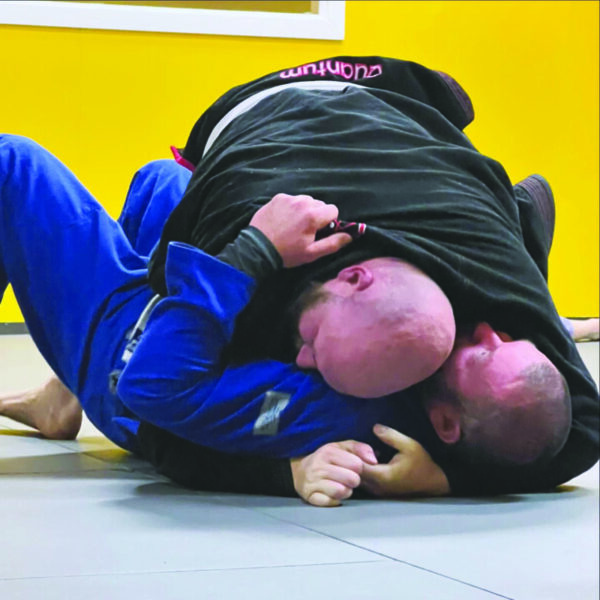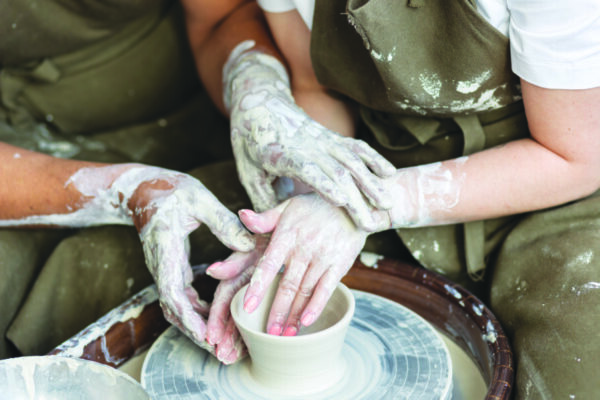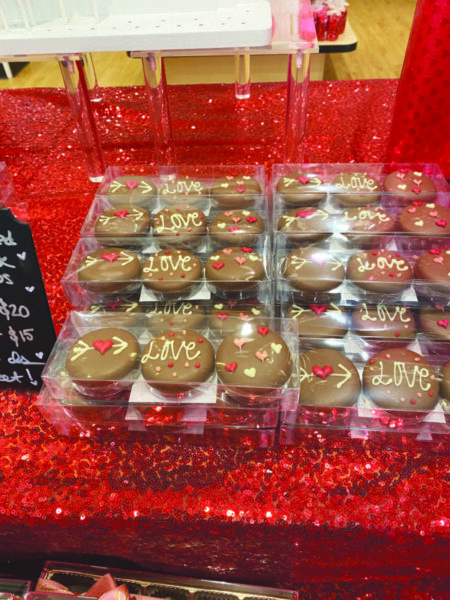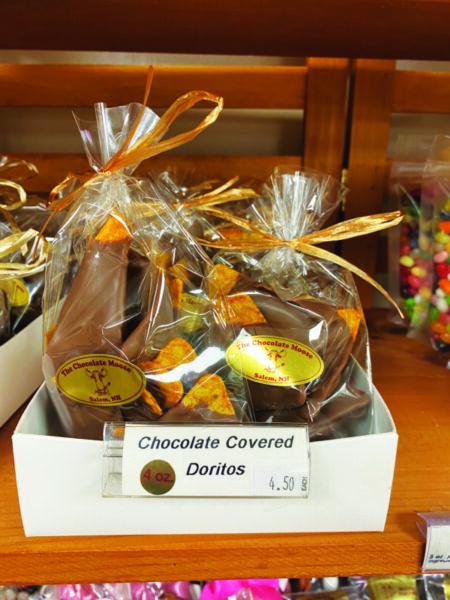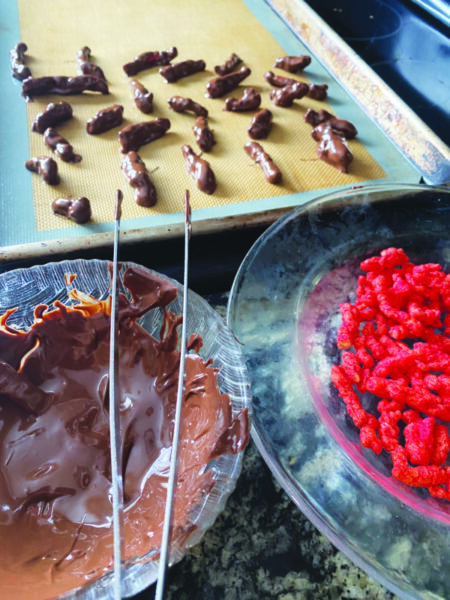Compiled by Amy Diaz
adiaz@hippopress.com
There is no “too soon” when it comes to summer day camps.
Some summer camps begin sign-ups in the earliest days of January — often giving previous years’ campers early access to registration. (A tip for parents in their first year of day camps is to take a less-than-ideal week your first year — the week around the July 4 holiday is often one of the last to fill up — to get a foot in the door with that camp and get access to early sign-ups the next year. Another tip is to see if there is a waitlist for camps that are full — this far in advance, plans can change and spaces can open up.)
But it’s also not too late to make summer day camp plans for summer 2025. Here are some area camps offering full-day and half-day camp options that have announced their summer 2025 plans. Information comes from the organizations’ websites unless otherwise stated. Some camps may also have extended care options and counselor-in-training options for teenagers not mentioned here. Know of a camp not mentioned here? Let us know at adiaz@hippopress.com.
General interest
• Adventure Camp Concord Parks & Recreation, concordparksandrec.com, 225-8690. In past years this camp has been open to kids in grades 3-8 and has featured day trips Mondays through Thursdays. Check back for updates on summer 2025.
• Amherst Parks & Recreation Amherst, amherstnh.myrec.com Amherst offers a classic summer day camp with Baboosic Lake Summer Camp in weeklong sessions the week of June 23-Aug. 15, with weekly, full summer and daily options as well as options for before and after care for the camps, which run 9 a.m.-4 p.m. The town also offers a two-week Teen Adventure Camp (July 14 -25) for rising 7th-9th-graders — $685 for residents, $910 for non-residents. The camp includes field trips. Amherst also offers sports camps (see sports section) as well as other subject-specific camps. A mini discovery camp for ages 4-5 runs June 23-Aug. 1, 9 a.m.-12:30 p.m. ($230 for residents, $260 for non-residents, per week). “Minecraft Innovators with Right Brain Curriculum” for grades 2-5 runs Aug. 18-22, 9 a.m.-noon. “Art Around the World” for grades 1-5 runs July 7-10, 8:30 a.m.-1:30 p.m. at Wilkins Elementary School. “Creative Skill Builders,” which combines “art therapy techniques, mindfulness based strategies, yoga, nature-based experiences and therapeutic games,” for grades 1-5 runs Aug. 18-21, 9 a.m.-2 p.m. at Peabody Mill Environmental Center. “Girls Empowerment Summer Camp” for girls entering grades 6-8 will run Aug. 4-7, 9 a.m.-2 p.m. at Souhegan High School.
• Boys & Girls Club of Central and Northern New Hampshire
nhyouth.org/school-age/camp/ Summer camps are geared to kids entering grades K-8 (with some opportunities for older kids and counselors in training depending on location). Camps cost $220 per week before May 1, $245 per week after. Most camps are open 7 a.m.-6 p.m., and most run 10 weeks. Locations offering summer camps include Bradley Street Clubhouse, Christa McAuliffe School, Penacook Elementary School and Boys & Girls Club at Penacook Community Center in Concord; Maple Street School in Hopkinton; Weare Middle School in Weare; First Baptist Church in New London; Pittsfield Elementary School in Pittsfield; Simonds Elementary School in Warner; Suncook Clubhouse in Allenstown; Epsom Central School in Epsom, and Andover Elementary School in Andover. See the website for more locations — including in the Kearsarge-Sunapee Region, Lakes Region, North Country, Suncook Region and Upper Valley — and details specific to each location.
• Boys & Girls Club of Greater Nashua 1 Positive Place, Nashua, bgcn.com/summer-camp, 883-0523 Last year the club ran weeklong sessions from late June through late August for ages K through 12th grade, with kids grouped in programs by age. Check with the website for updates on this year’s programming.
• Boys & Girls Club of the Souhegan Valley 56 Mont Vernon St., Milford, svbgc.org, 672-1002. The Boys & Girls Club will hold summer camp open houses on Saturday, March 15, and Saturday, May 3, 9 a.m.-noon. The 10-week program of weeklong sessions (each with a theme) runs June 16-Aug. 22. Cost is $225 per week until March 31, $275 after. The camp takes a variety of field trips and offers swimming and outdoor play. Camp runs 9 a.m.-3:30 p.m. with dropoff as early as 7 a.m. and pickup as late as 6 p.m. Camp Soughegan is open to rising K-10th-graders.
• Boys & Girls Club of Greater Salem 3 Geremonty Drive, Salem, salembgc.org/summercamp, 898-7709 Weeklong camps for ages 4-15 (grouped into programs by age) June 17-Aug. 22, 8:45 a.m.-4:30 p.m., with extended care options. $270 per week (plus $50 membership fee).
• Brainwave STEAM Camps 2nd Nature Academy, 10 Groton Road, Nashua, 881-4815, 2ndnatureacademy.com/brainwave Weeklong camps are offered June 23-Aug. 22. Many weeks have camps for kids as young as 6 and as old as 14. Camps are grouped by age, with themes each week; for example, June 23-27 it’s “Canvas Under the Sky: En Plein Air Canvas Painting & Drawing” for ages 10-14 and “Culinary Chemistry: Fun with Food” for ages 8-12. Each of the nine weeks has two different camp offerings. Most camps cost $460.
• Brentwood Summer Camp Brentwood Recreation Complex, 190 Route 125, Brentwood, brentwoodnh.gov Last year Brentwood offered eight weeklong sessions for grades 1-8. Check back for updates on summer 2025.
• Camp Adventure Auburn Parks & Recreation Department, auburnparksandrec.com Three weeklong camps in July (starting the week of July 14) meeting at 8:30 a.m. and returning at 4:30 p.m. with kids in grades 5-8 taking field trips around the state. Cost is $349 per week.
• Camp Carpenter 300 Blondin Road, Manchester, nhscouting.org/camp-carpenter This Scouting America camp offers programs for boys and girls in grades 1-5. Weeklong camps run the weeks of July 6-Aug. 3 with day and overnight camp options. Fees vary for Scouting members and nonmembers, sibling discounts, extended care, etc. Day camps run 8:15 a.m.-4 p.m. and include waterfront programs, archery and BB guns and more.
• Camp Foster 36 Camp Allen Road, Bedford, operated by the Boys & Girls Club of Manchester, 625-5031, mbgcnh.org/programs/summer_programs This 10-week camp, with different themes each week, runs June 23-Aug. 29 for campers entering grades 1-7. A bus takes campers from Union Street Clubhouse in Manchester to Camp Foster at 8:20 a.m. and returns at 4:15 p.m. Before (as early as 6:30 a.m.) and after (as late as 6 p.m.) care is available at the Clubhouse, including breakfast and dinner.
• Camp Kettleford 26 Camp Allen Road, Bedford, girlscoutsgwm.org This day camp of the Girl Scouts of the Green and White Mountains offers weeklong sessions for girls in grades K-8 and two two-week programs for girls in grades 5-8 (levels based on grade completed in 2024-25). Buses are available from some locations in surrounding towns to Kettleford. Open house Saturday, May 17, noon to 2 p.m. Sessions run June 23-Aug. 15, 9 a.m.-5 p.m., with two camps each week, one for girls grades K-3 and one for grades 4-6. Each session has a theme, such as “Tie Dye Adventure” (July 7-11, grades 4-6) and “Dinosaurs!” (Aug. 4-8, grades K-3). Cost for most one-week camps is $350; the two two-week sessions cost $675. Girl Scouts of the Green and White Mountains also operates Camp Seawood, a day camp in Portsmouth. It’s overnight camp is Camp Farnsworth in Vermont.
• Camp Lincoln 67 Ball Road, Kingston, 642-3361, ymcacamplincoln.org, hosted by Southern District YMCA, sdymca.org Six sessions — a one-week session June 16-20 and five two-week sessions running June 23-Aug. 22 — offer a traditional day camp experience to campers grades K-9, grouped in programs by age. On-site specialty camps for grades 4-9 offer options for a specialty focus for part of the camp day, such as Woodworking, Mountain Biking or Dungeons & Dragons. Off-site specialty camps for grades 4-9 offer field trips. Counselor in Training sessions are available for 14-year-olds and by invitation for 15-year-olds.
• Camp Lovewell 2nd Nature Academy, 10 Groton Road, Nashua, 881-4815,
camplovewell.com This outdoor adventure day camp offers nine weeklong sessions June 23-Aug. 22 with team-building activities, low ropes course, archery, arts & crafts, nature studies and orienteering, farm animal visits, swimming, kayaking, sports and field games, drama and skits, hiking and exploration and more, according to the website. Camp is for ages 6-14 and runs 9 a.m-4 p.m., with extended care 7:30 a.m.-5:30 p.m. (for extra fees).
• Camp Naticook merrimackparksandrec.org Weeklong camp sessions at Wasserman Park in Merrimack run June 23-Aug. 22 with each week themed (“Aloha Summer” is the first week) and campers participating in a variety of activities including arts & crafts, archery, boating in Naticook Lake, nature, sports & games, theater and more. Camp runs 8 a.m.-4 p.m., with extended care available as early as 7 a.m. and as late as 6 p.m. Camp is for kids who entered grades K-5 in fall 2024; 5th-graders can choose between Camp Naticook and Camp Trek. $310 per week for Merrimack residents, $360 per week for nonresidents. Additional fees for extended care. Sibling discounts available.
• Camp Otter 66 Hooker Farm Road, Salem, camp.mvymca.org/camp-otter A day camp for ages 6-13 on Captain’s Pond with “weekly themes, a swimming area for both instructional and free swim time, boating, basketball/volleyball courts, a baseball/soccer field, an archery and air rifle range, arts & crafts, ropes courses and more. Daily transportation is provided throughout the Merrimack Valley and southern New Hampshire,” according to the website. The camp is operated by Merrimack Valley YMCA, based in Massachusetts (mvymca.org) and runs the weeks of June 16-Aug. 29, 8 a.m.-5 p.m.
• Camp Ponemah Hampshire Hills Athletic Club, 50 Emerson Road, Milford, 673-7123, hampshirehills.com/camp-ponemah Weeklong camps June 16-Aug. 28, with dropoff 7:30-9 a.m. and pickup 3:30-4 p.m., extended care to 5 p.m. available most weeks (not Fridays). Swim lessons available as an add-on. Camp is for grades K-7. A Little Warriors program for ages 4-5 runs seven weeks (weeks of June 23-Aug. 8), dropoff 7:30-9 a.m. and pickup at 12:30 p.m. Troop T is for grades 8-9 with weekly sessions June 16-Aug. 8 and includes field trips, ropes course, volunteer opportunities and hikes.
• Camp Trek merrimackparksandrec.org Weeklong camp sessions meet in Merrimack for grades 5-9 starting the week of June 23 and running through Aug. 22. This is a trip- and activity-based program with daily field trips (such as, during the first week, to a ninja gym, Greenfield State Park, Chunky’s Cinema, Boundless Adventures and Wallis Sands State Beach). Camp runs 8 a.m.-4 p.m., with trips departing between 8:30 and 9 a.m. and returning in the afternoon before camp ends. Extended care is available as early as 7 a.m. and as late as 6 p.m. $340 for Merrimack residents, $390 for nonresidents, extra fees for extended care; sibling discounts.
• Camp Witzel bedfordnh.myrec.com Seven-week camp of weeklong sessions based in Bedford for ages 6-13 that runs June 23-Aug. 8, 9 a.m.-4 p.m. Programs are available in 5-day, 3-day and 2-day offerings. The cost for a 5-day week including Wednesday field trip is $300 for Bedford residents, $315 for non-residents, with different price tags for fewer days, before and after care and discounts for multiple children.
• Capital City Sports & Fitness 10 Garvins Road, Concord, 224-7787,
capitalcitysportsandfitness.com The Kids Summer Camp for ages 6-12 offers weeklong sessions June 23-Aug. 15, 8 a.m.-4 p.m. Camps include swimming, a variety of sports (basketball, volleyball, football, soccer, futsal, dodgeball, kickball and pickleball), obstacle courses, arts & crafts, board games and more. $250 per week, discounts for multiple weeks.
• Girls, Inc. of New Hampshire 340 Varney St., Manchester, 623-1117; 27 Burke St., Nashua, 882-6256; girlsincnewhampshire.org Eight weeklong sessions of camp, June 23-Aug. 15, featuring field trips, weekly themes and more for girls ages 5+ at the Manchester and Nashua locations. Breakfast, lunch, snack and dinner are provided. Cost is $225, with sliding fee scales, financial assistance and scholarships available. There is also a Young Women’s Leadership Program for rising 7th-9th-graders.
• Granite State YMCA graniteymca.org/camps/day-camp The Granite State YMCA operates nine day camps and two overnight camps, Camp Foss for girls ages 7-15 (campfoss.org) and Camp Mi-Te-Na for boys ages 7-15 (campmitena.org). See the website for day camp offerings in Rochester and Greenland. Camps generally run weekly June 22-Aug. 22 with a pre-camp week June 18-20. Most camps run 8:30 a.m.-4 p.m., with before and after care options. Most camps have new camper orientation days, camp open houses and camp family nights including the Camper of Character celebrations.
YMCA Allard Center of Goffstown (116 Goffstown Back Road) features Camp Halfmoon (232-8699; ages 6-14, broken into smaller age groups), a traditional day camp experience with weekly themes, 8:30 a.m.-4 p.m. There is a Summer Moon program for kids entering kindergarten. There are several specialty camps, such as Archery (ages 9-13), Baking the Basics (age 8-12), arts camps and wilderness camps. Teen Trip camp (232-8610) operates during weeks 2 to 8 and includes daily field trips for kids age 12-16. Halfmoon also has Leader in Training (ages 13-14) and Counselor In Training (age 15-16) programs. Aftercare swim lessons are also available.
The Allard Center also offers several ninja and gymnastics camps (232-8662), with offerings for kids as young as 4 and, for gymnastics, as old as 18 and as old as 14 for ninja. Tennis Academies (232-8612) are available for several weeks for kids ages 6-16. Adventure Clubs (232-8607) for ages 10-11 and 12-15 feature daily trips and activities.
Camp Mowkawogan (Beaver Meadow School, 40 Sewalls Falls Road, Concord, 228-9622, ext. 1123) Nine weeks of camp plus pre-camp week are available for ages 6-12, with a leader in training option for ages 13-14. This is a day camp experience with themed weeks and field trips.
YMCA of Downtown Manchester (30 Mechanic St., 232-8618) The summer program at this location runs all nine weeks, 7 a.m.-5:30 p.m. (no extended care options; swimming lessons are available as an add-on) with themed weeks for ages 6-11. Specialty camps for ages 8-12 include Junior Chef, Adventures in Art and Y World of Sports. A Teen Trip camp runs weeks 2 through 8 and features daily field trips for ages 12-16.
YMCA Day Camp of Hooksett (Hooksett Memorial School, 5 Memorial Drive, Hooksett, 623-3558) This traditional day camp runs for eight weeks (weeklong themed sessions June 23 through Aug. 15) for ages 6-10. Teen camps available for ages 11-13. Limited leader in training (ages 13-14) and counselor in training (14-16) camps are available.
Camp Pa-Gon-Ki (206 Rockingham Road, Londonderry, 437-9622) Camp runs 7 a.m.-5:30 p.m. with no extended care options for all nine weeks plus the pre-camp week. Pa-Gon-Ki is a traditional day camp with emphasis on the outdoors and is for ages 6-15, divided in age groups (swim lessons are available). The location also features several specialty camps with focus on arts, sports, STEAM, music and more as well as leader in training (ages 13-14) and counselor in training (14-16) camps.
Derry Voyager Camp (First Parish Church, 47 East Derry Road, Derry, 437-9622) This location offers eight weeks (June 23-Aug. 15) of STEAM camp for ages 6-11, 8 a.m.-5 p.m. with different themes each week.
Windham Explorers Camp (Windham Center School, 2 Lowell Road, 437-9622) This location offers seven weeks (June 23-Aug. 8) of STEAM camp for ages 6-11, 8 a.m.-5 p.m. with different themes each week.
• Hudson Parks & Recreation Summer Program hudsonnh.gov/recreation Summer program registration will open March 15, with early bird discounts, according to the website. Check back for updates on 2025.
• IMAGINE Camps New Morning Schools, 23 Back River Road, Bedford, 669-3591, newmorningschools.com Indoor and outdoor activities and clubs for kids ages 6-12. Camp is open 7 a.m.-6 p.m. weekdays with weekly and daily options. There is a preschool camp for ages 3-6 who are independent bathroom users. Check with the website for updates regarding this summer’s offerings.
• Kidz Kamp Boys & Girls Club of Greater Manchester, Union Street Clubhouse, 555 Union St., Manchester, bgcgm.org, 625-5031 This camp is for kids entering kindergarten in fall 2025. This 10-week camp will run June 23-Aug. 29 with care available as early as 6:30 a.m. and as late as 6 p.m., dinner and breakfast included. The camp will feature age-appropriate field trips including to Camp Foster in Bedford, according to the brochure.
• Krazy Kids 60 Sheep Davis Road, Pembroke, krazykids.com/register-for-
summer-camp, 228-PLAY Weeklong sessions for kids in grades K-5, June 23-Aug. 22 for $235 per kid per week (there are sibling discounts as well as extra fees for extended care). The camp runs 9 a.m.-4:30 p.m., extended care available at 7:30 a.m. and through 5:30 p.m. Indoor and outdoor activities plus weekly field trips.
• Manchester Police Athletic League 409 Beech St., Manchester, 626-0211,
manchesterpoliceathleticleague.org MPAL is open to kids ages 5-18 who are attending school. According to an email from the program: “MPAL’s summer program will run from Wednesday, June 18, to Friday Aug. 15. Hours will be 9 a.m. to noon, which includes breakfast and a bagged lunch, followed by our menu of athletic programs in the afternoons and evenings. We will offer 30 spots each day with a variety of programming each week that will include activities like visual and creative arts, crafting, presentations and athletics. To participate, youth must be registered with MPAL by completing a free registration form. Then, they must sign up for each day using our Sign-up Genius link that will release through our ‘Remind’ application on Wednesdays prior to each week. Find us on the web and social media to see our summer schedules as they release!”
• Manchester Parks & Recreation Fun in the Sun manchesternh.gov/Departments/Parks-and-Recreation/
Programs-and-Activities Programming for Manchester residents ages 6-12 will run from July 7 through Aug. 15 and registration will open in April.
• Meeting House Montessori School 28 Logging Hill Road, Bow; meetinghouse
montessori.com, 224-0004. Summer camp will run from June 23 through Aug. 22 with summer hours from 8:30 a.m. to 3:30 pm. or 7:30 a.m. to 5:30 p.m. Call for details.
• Melody Pines 510 Corning Road, Manchester, melodypines.com, 669-9414 A classic summer day camp with swimming, paddle boarding, arts and crafts, sports, water games, wall ball, gaga, archery and BB guns and more, Melody Pines fills up fast — as of Feb. 15, all weekly sessions (the week of June 16 through the week of Aug. 18) were filled but waitlist for some weeks was still available.
• My Gym Children’s Fitness Center 410 S. River Road, Bedford, 668-7196, mygym.com/bedford My Gym offers programming for kids under 1 and as old as age 9. Call for updates on this summer.
• Nashua PAL Youth Safe Haven 52 Ash St., Nashua, nashuapal.com, 594-3733 According to an email from Nashua PAL: “The Nashua PAL Youth Safe Haven Summer Program is open to all youth ages 7-18 in Greater Nashua … [A]ll programs at the Youth Safe Haven are provided for free to all youth. Summer hours, the week following school closing, are noon to 4 p.m. Tuesday — Friday. On Mondays, the facility is closed as youth are on an all-day field trip. Field trips are open to participating youth after a trial period as a member of the Youth Safe Haven. Regular programming includes arts and crafts, sports and activities, mentoring opportunities and outings, and much more to keep your child engaged and learning all summer long.”
• Nashua Parks & Recreation summer camp nashua.recdesk.com Registration will begin March 3; see nashua.recdesk.com/Community/Program for this summer’s details.
• North End Montessori School 698 Beech St., Manchester, northendmontessori.com, 621-9011 The North End Montessori School will offer a summer session that runs June 23 through Aug. 28 for kids ages 3 to 10. The theme will be “Medieval Times of England.”
• Outdoor Discovery Camp Peabody Mill Environmental CenterAmherst, amherstnh.myrec.com Weeklong camp sessions run June 23-Aug. 15, daily 9 a.m.-4 p.m. (extended care available) for kids in grades 1-7. Each week has a new theme, all “focused on exploring the great outdoors and encouraging an appreciation for the natural environment,” according to the website. $295 per week for Amherst residents, $345 for non-residents; daily $85 for residents, $95 for non-residents. See each week’s themes on the website.
• Stay & Play Camp Concord Parks & Recreation, concordparksandrec.com, 225-8690 In past years this camp has been open to kids in grades 1-5 with eight weeklong sessions featuring traditional camp activities at the City Wide Community Center and Keach Park. Check back for updates on summer 2025.
• Strawbery Banke Museum 14 Hancock St., Portsmouth, strawberybanke.org, bcoppola@sbmuseum.org Strawbery Banke offers camps that explore history, sports, art, theater and more for ages 6-17. Camps are grouped by ages — for most camps, the groups are ages 6-8, 9-11, 10-12 and 12-17. Camps run 9 a.m. to 3 p.m., with extended care available for an additional price. Most weeklong camps cost $400 with discounts for siblings or multiple weeks; two, two-week camps sessions cost $780. Camps run the weeks of June 23 through Aug. 18; some examples of sessions include “History Alive” (three sessions offered for ages 6-8), “Time Travelers: Life on the WWII Homefront” (ages 9-11, Aug. 11-15), “Surviving the Past” (ages 10-12, July 28-Aug. 1) and “Jr. Roleplayers: New Republic (1777-1818)” (ages 12-17, July 7-18).
• Summer Playground Program From Goffstown Parks and Recreation,
goffstownnh.gov Held at Barnard Park, this eight-week program is open to Goffstown residents ages 7 (or completed first grade) through 13. Weeklong sessions June 23-Aug. 15 offer programming Monday-Friday, 8:30 a.m.-4 p.m.
• Summer Playground Program From Londonderry Parks and Recreation, www.londonderrynh.gov Camp runs Monday, June 30, through Friday, Aug. 8, full day 9 a.m.-3 p.m. with a half-day option 9 a.m.-noon or noon-4 p.m. at South Elementary School (88 South Road, Londonderry). The camp includes themed weeks, library activities, pizza Fridays and more. Fees are based on full or half day and number of children from the same household attending.
• SummerQuest at World Academy, 138 Spit Brook Road, Nashua, 888-1982,
worldacademynh.com SummerQuest Camp is a five-day camp offering sessions beginning June 16 and ending Aug. 22, as early as 6:30 a.m. through as late as 6 p.m., for kids entering grades K-4. Navigators Camp for grades 5-8 offer two-week sessions with adventure-based themes. STEAM Enrichment Camp, also grades 5-8, features weekly themes that blend art and science such as Ceramics Workshop (June 30-July 3), e-Sports Galore (July 7-11) and Introduction to Drones (July 21-25); this camp runs 9-11 a.m. with an option to join the full-day Navigator Camp.
• Teen/Tween Summer Program Boys & Girls Club of Greater Manchester, Union Street Clubhouse, 555 Union St., Manchester, bgcgm.org, 625-5031 The club is open to members entering grades 6-12 all summer long, daily noon-7 p.m. This is a drop-in program with daily activities.
• Thrive Outdoors 190 Elm St., Manchester, thriveoutdoorsnh.com, 625-6600 Last summer Thrive offered “Summer Kids” programming with weekly sessions that operated daily 9 a.m.-5 p.m. and had week, day and drop-in options. Check back for 2025 details.
• Voyager Camp londonderrynh.gov Camp for ages 11-15, primarily for Londonderry residents, features field trips throughout the summer. After a registration fee you can register for individual trips (costs vary) or for all the summer’s trips.
• YMCA of Greater Nashua nmymca.org The YMCA of Greater Nashua offers camps at Camp Sargent (141 Camp Sargent Road, Merrimack); Merrimack YMCA (6 Henry Clay Drive. Merrimack); Nashua YMCA (24 Stadium Drive, Nashua) and Westwood Park YMCA (90 Northwest Blvd., Nashua). Weeklong camps run June 23-Aug. 22. Prices vary based on camps. Discounts for siblings and members are available.
Camp Sargent offers traditional day camp activities such as swimming, boating, arts & crafts, hiking, games, gaga ball and more as well as specialty camps such as “Digging for Dinos,” “Farm Camp” and “Boating Camp.” Camps are available, grouped by age, for kids as young as kindergarten and as old as 9th grade; Leaders In Training programs are available for grades 9-12.
Merrimack YMCA Camp Create offers arts- and STEAM-themed camps for grades 1-6 such as “Arts of All Sorts Camp” (grades 1-6), “Broadway Kids” (grades 1-6), “Storybook Arts” (grades 1-3), “Full S.T.E.A.M. Ahead” (grades 1-6) and “Junior Architects” (grade 4-6).
Nashua YMCA offers Little Investigators Camp for ages 3-5. This camp runs 10 weeks, 9 a.m.-1 p.m. with no extended care options.
Westwood Park YMCA offers sports camps (see sports section).
Academics
• Academic & College Prep Programs The Derryfield School, 2108 River Road, Manchester, derryfield.org/about/summer-programs Offerings include “Jumpstart Your College Essay” for rising 12th graders, June 23-27, 9 a.m.-noon, or July 7-11, 9 a.m. to noon, (cost is $395) and “SAT/ACT Prep” for rising 11th and 12th graders, July 28-Aug. 1, 9:15-11:45 a.m. for verbal and 12:15-2:45 p.m. for math (take either for $395 or both for $730).
• Academic Enrichment at University of New Hampshire Durham campus; unh.edu/youthprograms Academic-focused camps include “Camp Pageturner” (weeklong sessions for grades 1-5, the week of June 23 through the week of July 28, $300 for most sessions); “Writer’s Academy” (weeklong session June 23-27, grouped by age for grades 5-6, 7-8 and 9-12, and July 8-12, grouped by grades 6-8 and 9-12, 8:15 a.m. to 2:30 p.m.; $325), as well as other programs specifically for teens and high school students.
• Fluency Camp at Read2Me3, 167 S. River Road, Bedford; read2me3.com, 494-3849 Two summer sessions, each running for six days over two weeks (Tuesday through Thursday) are available for students entering grades 3, 4 and 5, according to the signup form on the website.
• Health Career Exploration Camp run by Southern New Hampshire Area Health Education Center (Southern NH AHEC), Lamprey Health Care, see snhahec.org or call 224-7360 Two Health Career Exploration Camps will be offered for students in grades 9-11 interested in nursing and other health careers. The cost for each camp is $25, scholarships available. Attendees will get certified in CPR, learn how to be successful in a health care career and more, according to organizer information. One camp will run July 21-25, 9 a.m. to noon plus a full day field trip at UNH Manchester (88 Commercial St. in Manchester). Another camp will run July 28-Aug. 1, 9 a.m. to noon, at Arlington Street Community Center (36 Arlington St. in Nashua). For questions, contact Carli Hughes at chughes@snhahec.org.
• Nashua Community College 505 Amherst St., Nashua, nashuacc.edu/about/for-the-public/summer-camps; 578-6881 Summer camp programs for ages 12-17 at Nashua Community College includes “Early Childhood Education Camp” which runs July 22-24, and is free. (See “Aviation” and “Science” sections for additional camps.)
Art
• The Canvas Roadshow/Hammer & Stain NH 25 S. River Road, Bedford,
thecanvasroadshow.com, 913-9217Camps will run 9 a.m.-2 p.m. daily for Summer Art & Yoga, geared to ages 7-12, the weeks of July 7-11, July 21-25 and July 28-Aug.1. The week of Aug. 11-15, 9 a.m.-noon, camp is art only and geared to ages 11-16. The week of Aug. 18, 9 a.m.-noon, the camp is also art only and geared to ages 7-14.
• Children’s Museum of New Hampshire 6 Washington St., Dover,
childrens-museum.org, 742-2002Half-day camps that blend art and science in hands-on activities. All camps run 8:30-11:30 p.m., Tuesday through Thursday. Camps cost $160 for younger kids, $170 for ages 8-10 and 10-12+. Camps include “Messy Art Mini Camp” for ages 4-5, July 8-10; “Science Art Mini Camp” ages 4-5, July 15-17; “Wild & Wide Awake” ages 4-5, July 29-31; “Storybook Adventures” ages 4-5, Aug. 5-7; “Wacky Science Discovery Camp” ages 6-7, July 15-17; “Amazing Animals STEAM Discovery Camp” ages 6-7, Aug. 5-7; “3D Print It Discovery Camp for Beginners” ages 8-10, Aug. 12-14, and “Advanced 3D Print It Discover Camp” ages 10-12+, Aug. 19-21.
• Creative Ventures Gallery 411 Nashua St., Milford, creativeventuresfineart.com, 672-2500 Two camps are on the schedule: “Art In Animation” with Kristine Mancuso Aug. 11-14, 9 a.m.-noon, for ages 8-12, $125; and “Nature Escape in Art Summer Camp” with Kristine Mancuso Monday, Aug. 4,-Thursday, Aug. 7, 9 a.m.-noon, for ages 8-12, $125.
• Hollis Artspace 30 Ash St., Hollis;
hollisartspace.com, 465-4300 According to an email, Hollis Artspace will offer art mini camps as well as five-day art camps for ages 4-12 with themes including animal art, character design, tinker camp, felting camps and more. Some mini camps are in June and August but most camps are in July; check back for details on this year.
• Kimball Jenkins 266 N. Main St., Concord, kimballjenkins.com, 225-3932 Kimball Jenkins will offer three two-week themed sessions for ages 6-14 from July 7 through Aug. 15 with the themes “Art of Oz” (July 7-18), “Mixed-Media Mash-up” (July 21-Aug. 1) and “Nature’s Palette” (Aug. 4-15). Kimball Jenkins will also offer two one-week art intensives for ages 15-17 (June 23-27 and Aug. 18-22). Registration opens March 3, according to a post on the school’s Facebook page.
• Paint pARTy 135 N. Broadway, Salem, 898-8800, paintpartynh.com Paint pARTy offers four-day-a-week, half-day (9 a.m.-noon) art camps for grades 1-4 (weeks of July 7, July 21, Aug. 4) and grades 5-8 (July 14, July 28, Aug. 11). $160 per session.
• Studio 550 Community Art Center 550 Elm St., Manchester, 232-5597, 550arts.com Offerings for summer 2025 include Teen Clay Camps (for ages 10+) the weeks of June 23-27, July 7-11 and Aug. 11-15 from 2:30 to 5 p.m. and Arts Explorer Camps (for ages 8+) the weeks of July 14-18 and Aug. 4-8 from 2:30 to 5 p.m.
Aviation & space
• Aviation Museum of NH27 Navigator Road, Londonderry, aviationmuseumofnh.org, 669-4820 Flights of Discovery Summer Camp features three two-week sessions (two for ages 10-13, one for ages 14-17) that run Monday-Friday, 9 a.m.-4 p.m., and offer an in-depth look at aviation with hands-on activities, guest speakers, field trips and more. Cost is $1,300 for each two-week camp (scholarships/financial aid available). Camps for ages 10-13 run June 16-27 and July 28-Aug. 8; camp for ages 14-17 runs July 7-18.
• McAuliffe-Shepard Discovery Center 2 Institute Drive, Concord, starhop.com, 271-7827 Seven weeklong STEM camps with four focused on space or rockets — “Blast Off” for ages 8-11, July 7-11; “Blast Off — Payload Specialist” for ages 12-14, July 21-25; “So You Wanna Be An Astronaut” for ages 5-7, July 28-Aug. 1 and “Star Hunters” for ages 8-11, Aug. 4-8. Most camps are weeklong, run 8:30 a.m. to 3 p.m. and cost $360.
• Nashua Community College 505 Amherst St., Nashua, nashuacc.edu/about/for-the-public/summer-camps; 578-6881 Summer camp programs at Nashua Community College include “Aviation” for grades 6-12, which looks at different careers in aviation, four days in the week of July 14. The cost is $295.
• WinnAero’s Ace Academy Laconia Airport 65 Aviation Way, Gilford, winnaero.org/register Aviation- and aerospace-related camps. Half-day camps for grades 3-5 “Elementary Aerospace Academy” cost $330 and run 8:30 a.m.-noon or 12:30-4 p.m. July 7-11 and July 14-18. Middle School Aviation Academy ($600) for grades 6-8 is July 7-11, 8:30 a.m. to 4 p.m., and includes Pilot and Air Traffic Control; Pilot and Search/Rescue & Emergency Services, and Pilot and Aerospace Engineering/Manufacturing. There is also a middle school girls-only class July 14-18. Middle School Space Academy ($600) for grades 6-8 July 14-18, 8:30 a.m. to 4 p.m. For grades 9 -12 there are three high school aviation sessions ($600) “Systems Toolkit: Orbital Mechanics, Guidance, Navigation and Control” July 7-11, 8:30 a.m.-4 p.m.; HS Private Pilot Pre-Ground School (ages 15+), July 7-11, and “Pilot and Aerospace Engineering/Manufacturing” July 14-18, 8:30 a.m.-4 p.m. High School Drone/UAS Academy ($690) for grades 9-12 is July 14-18, 8:30 a.m.-4 p.m. High School Medical Aviation Academy ($690) for grades 9-12 is July 14-18, 8:30 a.m.-4 p.m.
Dance
• Allegro Dance Academy 100 Factory St., Nashua, 886-7989, allegrodancenh.com Summer camp July 7-Aug. 14; half-day camps with a different theme for each week, according to an email from the academy. Early bird registration opens April 1.
• Bedford Dance Center 172 Route 101, Bedford, bedforddancecenter.com, 472-5141 Offerings include classes in July and private lessons; a half-day (9 a.m.-noon) three-day camp for ages 5-8 July 29-31; a Contemporary Workshop for ages 8-13 and 12+, July 28-Aug 1, 9 a.m.-3:30 p.m.; a Pre-Pro Workshop for ages 8-13 and 12+, Aug. 4-8, 9 a.m.-4 p.m., and a Choreo Intensive, Aug. 11-14.
• Bedford Youth Performing Company 155 Route 101, Bedford, bypc.org, 472-3894 BYPC’s dance and movement summer offerings include weeklong preschool camps (running most weeks the week of June 9 through the week of July 28, 9 a.m.-2 p.m.) for ages 3-6 on subjects including science, theater, superheroes and circus. For older kids a Dance Boot Camp (ages 12+) runs June 16-20, 4:30-9 p.m.; Taste of Broadway Camp (grades 1-8) runs June 16-20 9 a.m.-4 p.m. (with an option to go select days or all week) and Acro Circus Camp (ages 8-12) runs July 28-Aug. 1, 9 a.m.-4 p.m. The school also offers summer music classes. See website for pricing.
• Boys & Girls Club of the Souhegan Valley 56 Mont Vernon St., Milford, svbgc.org, 672-1002. The Boys & Girls Club has several dance camps on its summer schedule, according to a post on its Facebook page. “Defying Gravity” camp runs Aug. 4-5, 9 a.m.-noon, for ages 7-12; Hip-Hop Dance Camp runs July 14-15, 10 a.m.-noon, for boys ages 7-12; Musical Theatre Dance Camp runs July 28-29, 9 a.m.-noon, ages 13-18; and Pom/Jazz Mini-Club is July 21, 9 a.m.-noon, ages 7-12.
• Broadway Bound Performing Arts Center 501 DW Highway, Merrimack, 429-8844, broadwayboundpac.com Offerings include classes and workshops in August and camps: Musical Theatre Camp (June 30-July 18, 9 a.m.-3 p.m., for ages 6-18, with ages 14-18 welcome to apply as LITs); Kids Dance Camp (July 28-Aug. 1, 9 a.m.-3 p.m., for ages 4-11), and Intensive Dance Camp (Aug. 4-8, 9 a.m.-2 p.m.). Tuition varies based on program and discounts for multiple camps, and there are extra fees for early and late care.
• Concord Dance Academy 26 Commercial St., Concord, 226-0200,
concorddanceacademy.com Offerings include a summer intensive in June and early July (ages 5-18, call for information about placement) and Summer 2025 Dance Camp, July 28-Aug. 1, full day (9 a.m. to 4 p.m.) and half day (9 a.m. to 1 p.m.), with early and late care available and an option to register for individual days — recreational camp for ages 4-12 and intensive camp for ages 8-13. A mini camp for ages 3-5 runs 9 a.m.-1 p.m. Kids ages 13+ can apply to be dance helpers.
• Creative Dance Workshop of Bow 1355 Route 3A, Bow, 225-7711, nhdances.com Offerings include a half-day (9 a.m.-noon) camp June 23-27 and full day (9 a.m.-3 p.m.) and half day the weeks of July 7, July 14, July 21 and July 28.
• The Dance Company 130 Route 101A, Amherst, 864-8374, www.
thedancecompanyonline.com Offerings include Camp Dance, July 7-11, 9 a.m.-4 p.m., grades 1-5; Camp Acro, Aug. 4-7, 10 a.m.-1 p.m., ages 3-6 and 7-11; Level Up, Aug. 11-15, ages 6-10 and 9-11, 9-11:30 a.m. and noon-5:30 p.m. for ages 11+, and Camp Theater, July 21-25, 9 a.m.-4 p.m. (with a show on July 25), grades 1-2 (audition date June 18). The school has dance parties for ages 3-8 on some Wednesdays 10 a.m.-1 p.m. where you can register for individual days; acro and power clinics, and a variety of weekly classes in July for kids as young as new walkers through 10+.
• Dance Visions Network 699 Mast Road, Manchester, 626-7654,
dancevisionsnetwork.com The studio will offer Mini Dance Camp July 15-17, 9 a.m.-noon, for ages 3-6; Summer Dance Camp July 21-23, 9 a.m.-3 p.m., ages 7-15; DVN Summer Dance Intensive Aug. 4-8, 9 a.m.-3 p.m. for ages 9+ (with 3+ years ballet experience), and Summer Technique Classes for dancers 7+. Check the website mid-March for details, according to an email from the studio.
• Dimensions in Dance 84 Myrtle St., Manchester, 668-4196,
dimensionsindance.com A “Fairy Tale Dance Camp,” pre-ballet, is open to ages 3-6, July 21-25, 9 a.m.-12:30 p.m. Level 1-2 Dance camp is open to grades 1-2, July 21-25, 9 a.m-2:30 p.m. Level 2-3 Dance Camp is geared to grades 2-5, July 21-25, 9 a.m.-2:30 p.m. Level 4-5 Junior Dance Intensive for dancers with experience in grades 4-8 runs July 28-Aug. 1 and Aug. 4-8, 9 a.m.-3 p.m. Summer Dance Intensive for Levels 6-Adult runs July 28-Aug. 1 and Aug. 4-8, 9 a.m.-4 p.m. for grades 7 through college. Prices vary, with discounts for sign-up before March 21.
• Happy Feet Dance School 25 Indian Rock Road, Windham, 434-4437,
happyfeetdanceschool.biz Check the website in spring for summer 2025 offerings.
• Kathy Blake Dance Studios 3 Northern Blvd., Amherst, 673-3978,
kathyblakedancestudios.com The studio will offer six-week classes for all ages (3 to adult) as well as summer dance team intensives the weeks of July 7-11 and Aug. 11-15, 9 a.m.-4 p.m. for ages 7-18. Summer fun dance and theater camps are offered for full-day (9 a.m.-4 p.m.) and half-day (9 a.m.-noon) camps: “Fairies, Unicorns & Rainbows” (July 14-18, ages 3-8); “Disney Dance Camp” (July 21-25, ages 3-8); “Animal Jam Dance Camp” (July 28-Aug. 1, ages 3-8), and “Defying Gravity” (Aug. 4-8, ages 5-7 and ages 8-13). These camps end with a mini performance for parents.
• Londonderry Dance Academy 21 Buttrick Road, Londonderry, 432-0032, londonderrydance.com The academy offers a “Back to the Barre Summer Dance Intensive” Aug. 18-22, 8:45 a.m.-3 p.m. for ages 7+. The curriculum includes a variety of dance genres, with an in-studio presentation at the end of the week. Cost is $450. There is also a Creative Kidz Camp for ages 3-6.5 in two weeklong sessions — June 23-27 and Aug. 18-22 — 9-11:30 a.m., which features art, dance, music and dance theater, $150 per week.
• Melissa Hoffman Dance Center 210 Robinson Road, Hudson, 886-7909,
mhdcdance.com Check back for summer 2025 camps.
• Miss Kelsey’s Dance Studio 2626 Brown Ave., Manchester, 606-2820, mkdance.com Camps — a few full-day and some part-day — offer a variety of instructions grouped by age: ages 3-6 (Flip & Fun Camp on Aug. 1, 12:30-3:30 p.m., for example), ages 5-9 (Camp Red on Aug. 4, 9-3 p.m., for example), ages 6-11 (Villains Day on July 28, noon-5:30 p.m.) and ages 7-18 (Creative Kids Fashion Camp on July 14, 3:30-6:30 p.m.). Prices vary based on class.
• Nancy Chippendale’s Dance Studios 49 Range Road, Building No. 2, Suite A, Windham, 458-7730, chippswindham.com Summer dance camp for preschool through 1st grade will run daily, 9 a.m.-noon, the weeks of July 14 and July 21. A Little Chipp Boot Camp for grades 2-5 will run 9 a.m.-noon Aug. 4-8.
• New England School of Dance 679 Mast Road, Manchester, 935-7326
newenglandschoolofdance.com A summer intensive will run June 23-26: 9 a.m.-2 p.m for ages 6-8; 9 a.m.-3 p.m. for ages 9-11, and 9 a.m.-4 p.m. for ages 12+. Mini camps for ages 3-6 will run July 22-24 (Prince & Princess Power Camp) and Aug. 5-7 (Tiny Explorers Dance Camp); there are discounts to sign up for both camps and to sign up for camp before April 1. The school will also offer a four-week session of technique classes.
• New Hampshire Academie of Dance 1 Action Blvd., No. 4, Londonderry, 432-4041, nhadance.com Circus Intensive will be offered June 23-26 for ages 8-10. A Circus Camp will also be offered June 23-26, 1:30-6:30 p.m., for ages 6-8.
• N-Step Dance Center 1134 Hooksett Road, Hooksett, 641-6787, nstepdance.com In addition to summer classes, N-Step will offer two musical theater camps (8 a.m.-4 p.m. for ages 4+), each a week long, July 7-11 and July 28-Aug. 1. There will also be weeklong intensives (some during the day and some in the evening) for dancers of different levels.
• Southern New Hampshire Dance Theater 19 Harvey Road, Bedford, 263-3803, snhdt.org Registration is currently open for Princess Camp, June 24-26 and July 8-10, 9:30-11:30 a.m. for ages 3-5, and 2-4 p.m. for ages 4-6. Check back for additional summer programs.
• Turning Pointe Center of Dance 371 Pembroke St., Pembroke, 485-8710,
turningpointecenterofdance.com The summer dance camp is June 23-27, with a session 9 a.m.-noon for ages 5-7 and another 12:30-4 p.m. for ages 9-11.
• Unbound Dance Academy 237 Londonderry Turnpike, Hooksett, 777-0050, unbounddanceacademy.com Camp offerings include Wicked, July 7-11, 9 a.m.-2 p.m., for ages 8-17, culminating in a production on Friday at 2 p.m; Princess Camp, July 14-18, 9 a.m.-2 p.m., for ages 4-7; Intermediate/Advanced Acro Camp July 14-16, 5-6:30 p.m.; Beginner/Intermediate Acro Camp, July 21-23, 5-6 p.m., levels 1-3; Ultimate Dance Camp, July 21-25, 9 a.m.-1 p.m., for ages 8-14, and Ballet Intensive, Aug. 4-6, 9 a.m.-noon, ballet levels 3+.
Games
• Chess Wizards
bedfordnh.myrec.com Full-day (9 a.m.-3 p.m.) or half-day (9 a.m.-noon or noon-3 p.m.) camps focus on building chess skills via lessons and games for ages 6-12 the weeks of July 7 or July 21 at Bedford Town Hall. Full day camp $340; half day camp $240.
• Nashua Community College 505 Amherst St., Nashua, www.nashuacc.edu/about/for-the-public/summer-camps; 578-6881 Summer camp programs at Nashua Community College include “Table Top Role Playing Games” for rising 6th graders through rising seniors. The class runs four days the weeks of July 7, July 14, July 21 and July 28. The cost is $295.
Gymnastics
• A2 Gym & Cheer 16B Garabedian Drive, Salem, 328-8130, a2gc.com Seven weeks of summer camp open to ages 5-12 with full- and half-day options. Contact Info@a2gc.com for 2025 details.
• Gymnastics Village 13 Caldwell Drive, Amherst, 889-8092, gymnasticsvillage.com Full day (9 a.m.-3:30 p.m.) and half day (9 a.m.-noon) are available in weekly sessions from June 23 through Friday, Aug. 22. You can register for a week or with a 10-pack of days. Full- and half-day Gymnastic Camp and Ninja Camp are available to ages 6-14; a junior camp with half days is available for ages 4-5.
• Gym-Ken Gymnastics 184 Rockingham Road, Windham, 434-9060; gymkengymnastics.com Check back for information on 2025.
• Impact Gymnastics 301 River Road, Bow, 219-0343, impact-gymnastics.com Full-day camp for ages 5-13 runs 8:30 a.m.-4 p.m. (early and late care options for additional fee) for $300 per week. Camp runs June 23-Aug. 15, with new themes each week.
• Noha’s Gymnastics Academy 200 Perimeter Road, Manchester, 518-7660; 30 Pond St., Nashua, 880-4927; ngacademy.us Full- and half-day (morning or afternoon) camps offered in both locations. Discounts for registrations before April 1.
• Sky High Gymnastics 185 Elm St., No. 2, Milford, 554-1097,
skyhighgym.com Full- and half-day camps offered June 16-Aug. 29, with weekly sessions each with a different theme, and dropoff that starts as early as 7:30 a.m. and ends by 5 p.m. The camp, for ages 4-12, includes indoor and outdoor play, crafts, daily gymnastics class and more.
• Southern New Hampshire Gymnastics Academy 4 Orchard View Drive, No. 11, Londonderry, 404-6181, snhga.com Full-day (9 a.m.-5 p.m.) and half-day (9 a.m.-1 p.m. or 1-5 p.m.) camps are available the weeks of June 23 and then the weeks of July 7-Aug. 18. Camps are for ages 4 and up. Prices are based on number of days, with discounts for siblings and extra fees for extended care.
• Tumble Town Gymnastics 444 E. Industrial Park Drive, No. 10, Manchester, 641-9591, tumbletownnh.com Weeklong camps are the week of July 7 through the week of Aug. 11, 9 a.m.-3 p.m. Discounts available for multiple weeks.
Martial arts & ninja
• ATA Martial Arts of Merrimack 707 Milford Road, Unit 2C, Merrimack; atabbanh.com, 881-5435 Call for updates on 2025 summer camps.
• Bedford Martial Arts Academy 292 Route 101, Bedford, 626-9696,
bedfordmartialartsacademy.com Camp features field trips, dodgeball, obstacle courses, indoor and outdoor activities, playground and pool activities and more, according to the website. Contact the school for details.
• Empowering Lives Martial Arts 542 Mast Road, No. 15, Goffstown, 978-414-KICK, martialartsnewhampshire.com Summer camp featuring themed weeks with full-day, half-day and drop-in options as well as early dropoff and late pickup. Call for details.
• Granite State American Kenpo Karate 290 Derry Road, No. 5, Hudson, 598-5400,
gsakenpo.com Camp offers indoor and outdoor games, arts & crafts, field trips, park visits, outdoor play and more, according to the website. Contact the studio for details.
• Inner Dragon Martial Arts 77 Derry Road, Hudson, 864-8756, innerdragonma.com According to an email from the studio, the camp will run the entire summer, 8 a.m.-4:30 p.m., and feature games, weekly field trips, weekly library trips, reading challenges and more. The program offers weekly, five-week and full-summer options, the email said.
• Phoenix Fire Martial Arts 79 Plaistow Road, Plaistow, 378-0420, phnixfire.com Weeklong camps June 23-Aug. 29, 9 a.m.-4 p.m. daily (option for early dropoff and late pickup for an additional fee). Camps will feature games, crafts, water games, free play and more, the website said. $250 per week.
• The Training Station 200 Elm St., Manchester, 505-0048, thetrainingstationnh.com Past camps have included trips to a Fisher Cats game and the Manchester Fire Department, outdoor obstacle courses and more. Call for 2025 information.
• USA Ninja Challenge Manchester 444 E. Industrial Drive, Manchester, ninjamanchesternh.com, 935-7100 USA Ninja Challenge Manchester offers weeklong sessions for ages 6-12, 9 a.m.-noon, the weeks of June 23, July 14, July 28 and Aug. 11. $225 for weeklong sessions. Call for information on clinics and workshops.
• USA Ninja Challenge Concord 14 Chenell Drive, Concord, 228-9936, ninjaconcordnh.com The Concord USA Ninja Challenge offers camps that run 9 a.m.-noon, the weeks of June 23 (teens 12+), July 7 (ages 6-8), July 14 (ages 8-12), July 21 (ages 8-12), July 28 (advanced) and Aug. 4 (ages 6-8). $250 per week.
• USA Ninja Challenge at Gymnastics Village 13 Caldwell Drive, Amherst, 889-8092, gymnasticsvillage.com Full- and half-day ninja camps are available. Full-day camps run 9 a.m.-3:30 p.m. the weeks of June 23 through Aug. 18 with weeklong sessions. Half-day runs the same weeks, 9 a.m.-noon.
• USA Ninja Challenge Hudson 17 Friars Drive, Unit 18, Hudson, 417-6820, ninjahudson.com Week-long camps or by the day, 9 a.m.-noon, for ages 6-12. $250 per person (discount for members). See website for schedule.
Multimedia
• ConcordTV Video camps 170 Warren St., Concord, yourconcordtv.org Last year’s camps offered beginner and advanced video creation and editing skills geared to ages 11-15. Check back for 2025 camp info.
• Film & Audio Camp at Let’s Play Music, in Derry (145 Hampstead Road, 425-7575), Manchester (2626 Brown Ave., 218-3089) and Hudson (136 Lowell Road, 882-8940) letsplaymusic.com/summer-camps Geared to ages 10-18, Film & Audio Camp will run Mondays through Thursdays, 9 a.m.-4 p.m., $349. Sign up online for site- and date-specific information.
• Londonderry Triple Threat Film Camp at Londonderry Dance Academy Studios, 21 Buttrick Road, Londonderry, triplethreattheatercamp.com, 432-0032 Geared to ages 7-17, this camp will teach students how to write, direct, shoot and edit a short film. Camp is June 23-July 3, 8:45 a.m.-3 p.m. Tuition is $575.
• Media Camp at Londonderry Access TV Londonderry Access Center, 281 Mammoth Road, Londonderry, 432-1147; Find them on Facebook. Media Camp (where kids learn to create short-form videos and longer TV and get experience working in a professional studio) will run July 7-18, 10:30 a.m.-2:30 p.m. for grades 5-8. Cost is $85. Call or email erowe@londonderrynh.org to register.
• NH Audubon 26 Audubon Way, Auburn; 84 Silk Farm Road, Concord; 224-9909, nhaudubon.org “Conservation Quest Camp” from Media Power Youth will allow campers to “discover the joys of being present in nature while having fun with new friends and creating short films to share their conservation stories.” Sessions run the weeks of July 21-25 at the McLane Center in Concord and Aug. 4-8 at the Massabesic Center in Auburn.
• SEE Science Center 200 Bedford St., Manchester, see-sciencecenter.org, 669-0400 SEE will offer two weeklong sessions of “Animation with LEGO Camp” for ages 8-12. Camps run Aug. 4-8 or Aug. 11-15, 9 a.m.-3:30 p.m. SEE also offers one weeklong camp about filmmaking, “Reel Explorers Camp,” for ages 10-14, July 14-18. The cost is $300 with discounts for members, sibling enrollments and multiple camps.
• TV & Film Camp New London Barn Playhouse, 84 Main St., New London, 526-6710, nlbarn.org/summer-camps TV & Film Camp will be held at the New London Historical Society July 21-25, 9 a.m.-4 p.m., and offer hands-on experience in front of and behind the camera. The cost is $350. Camps are grouped for ages 6-8 and 9-11.
Music
• Bedford Youth Performing Company 155 Route 101, Bedford, bypc.org, 472-3894 BYPC’s summer music offerings include private lessons and Kindermusik (infant through age 7) drop-ins as well as Rock Band Camps for grades 4-6 (June 23-27, 3-8 p.m., and July 28-Aug. 1, 9 a.m.-2 p.m.), grade 7+ (July 7-11, 3-8 p.m., and Aug. 4-8, 3-8 p.m.) and grade 7+ recording camp (Aug. 11-15, 3-8 p.m.). $295 per session.
• Concord Community Music School 23 Wall St., Concord, ccmusicschool.org, 228-1196 The school will offer a variety of classes (Music & Movement for ages 4 months to 7 years, for example) and private lessons as well as a series of weeklong camps from late June to early August. Camps include Piano Dynamos Camp (June 23-27, 8:45 a.m.-4:30 p.m.) for ages 9-15; Summer String Camp (June 23-27, 8:45 a.m.-4:30 p.m.) for ages 8-15; Puppetry Arts Camp (July 7-11, 9 a.m.-1 p.m.) for grades 1-6; Summer Jam Camp (July 7-11, 8:45 a.m.-4 p.m., and July 14-18, 8:45 a.m. to 1 p.m.) for grades 5-12; Vibe & Vision: A Creative Adventure (July 14-18, 1-5 p.m.) for grades 5-12; Creative Arts Camp (July 21-25 and July 28-Aug.1, 9 a.m.-4 p.m.) for grades 1-6, and Spotlight Theater Arts Camp (Aug. 4-8, 9 a.m.-4 p.m.) for grades 1-6. Some camps require experience. Extended care is available for some camps. Leaders In Training spots for grades 7-9 and Counselors in Training slots for grades 10+ are available for some camps.
• Let’s Play Music locations in Derry (145 Hampstead Road, 425-7575), Manchester (2626 Brown Ave., 218-3089) and Hudson (136 Lowell Road, 882-8940) letsplaymusic.com/summer-camps Summer camp offerings include Vocal Virtuoso Camps (ages 8-13), Intro To Music & Arts Camp (ages 7-12), Ready to Rock Camp (ages 7-12) and Rock Band Camp (ages 10-16). These camps run Monday through Thursday, 9 a.m.-4 p.m., and cost $349. Ready to Rock Camp for ages 4-6 run Monday through Thursday, 9 a.m.-1 p.m., and cost $249.
• Manchester Community Music School 2291 Elm St., Manchester,
mcmusicschool.org, 644-4548 The school has a variety of camps including Music Exploration, Band, Piano, and Guitar, as well as summer ensemble opportunities for musicians of all ages, according to the school. Check the website in early March for 2025 details.
• Nashua Community Music School 2 Lock St., Nashua, 881-7030, nashuacms.org The school offers summer lessons as well as summer camps for ages 4-12 and After Dark programs for teens. Full-day camps for ages 8-12 run 9 a.m.-3 p.m., cost $325 and include Broadway Week (July 7-11), Instrument Adventure (July 14-18) and Pop Star 2025 (July 21-25). Half-day camps for ages 4-7 run 9 a.m.-12:30 p.m. and include Latin Music Week (July 7-11), Broadway Babies (July 14-18) and Music of Africa (July 21-25). After Dark programs include Pop, Punk & Protest (July 29-31); Chamber Ensemble (Aug. 5-7); DJ Experience (Aug. 12-14) and Rock Band (Aug. 19-21 with a concert on Saturday, Aug. 23, at 2 p.m.). After Dark camps run 6:30-9 p.m., $165 for the session.
• School of Rock Nashua 225 DW Highway, Nashua, 600-7625,
schoolofrock.com Camps run 9 a.m.-3 p.m. and cost $549. Camps include Rock 101 Camp for beginners ages 7-12 (June 23-27 and July 28-Aug.1); Best of the ’90s Camp (July 7-11 and Aug. 4-8); ’80s Rock Camp (July 14-18 and Aug. 11-15), and Classic Rock Rewind Camp (July 21-25 and Aug. 18-22).
• University of New Hampshire Summer Youth Music School unh.edu/youthprograms UNH offers instruction that concentrates on an instrument or voice part with a program that concludes with a concert. The school offers Junior (for kids who have just completed grades 6-8; July 12-16) and Senior (kids who have just completed grades 9-12; July 19-27) sessions as well as a Chamber Intensive option. Junior and Senior sessions have overnight and commuter options.
• Upbeat New Hampshire Summer Festival upbeatnewhampshire.org The music education program Upbeat New Hampshire will hold a camp Monday, June 23, through Friday, June 27, 9 a.m.-noon at Nashua High School North in the Music Wing (8 Titan Way, Nashua) for string musicians in grades 3-12. The cost is $260 for regular students, $295 for advanced students and $235 for an additional sibling, with scholarships available. The camp includes daily semi-private lessons, orchestra rehearsal, music theory and more. Register online or via upbeatnewhampshire@gmail.com.
Nature & the Outdoors
• Beaver Brook Nature Camps Beaver Brook Association, 117 Ridge Road, Hollis, 465-7787, beaverbrook.org Camp registration opens Friday, March 7, at 8 a.m. (March 3 for members) Camps in past years have been weeklong, with offerings in late June and July, focused on different subjects related to nature and the outdoors for kids in grades K-6.
• Concord Parks & Recreation The Lodge at White Park, concordparksandrec.com, 225-8690 In the past, nature camps have been open to kids in grades 1-5. Check for updates on 2025.
• Joppa Hill Educational Farm 174 Joppa Hill Road, Bedford,
theeducationalfarm.org; 472-4724 The farm offers camp programs for ages 5-12 that include hiking, farm chores and more. Weeklong camp sessions run daily 9 a.m.-3 p.m. the week of June 23 and the week of July 7 through the week of Aug. 18. $375 per week, plus $50 for a 4 p.m. pickup. There are also “Farmer for a Day” options to do a one- to three-day camp 9 a.m.-2 p.m., June 30-July 2 or Aug. 25-29 ($75 per day).
• NH Audubon nhaudubon.org Camps for kids ages 5-15 are available at both the McLane Center in Concord and the Massabesic Center in Auburn the week of June 23 through the week of Aug. 18 (the week of June 30 is three days). The camps run 9 a.m.-4 p.m. and are grouped by age with ages 13-15 serving in the Leadership in Training program. The cost is $345 per week, $225 per week for Leadership in Training participants, with discounts for members. See the website for a rundown of each week’s theme.
• Upreach Therapeutic Equestrian Center 153 Paige Hill Road, Goffstown, upreachtec.org, 497-2343 “Fun on the Farm” camp is offered for ages 8+ June 23-27, 9 a.m.-noon. Students learn the basics of horse care and anatomy and take part in horse-related activities. The cost is $350.
Science & STEM
• Circuit Lab Camps via Concord Parks & Recreation, concordparksandrec.com, 225-8690 In previous years this camp has taught the basics of computer programming, electronics and circuitry. Check the website in April for 2025 offerings.
• iDTech Camps at Southern New Hampshire University, 2500 N. River Road, Manchester,idtech.com/locations Weeklong camps (with day and overnight options) are available for kids ages 7-17 on STEM subjects including video game design, BattleBots, coding, AI, digital animation and more. The price starts at $1,079. Weekly camps are offered the week of July 7 through the week of Aug. 4. Ages and weeks vary by camp subject.
• LetGoYourMind letgoyourmind.com/summer-program-locations LEGO-based STEM programming in weeklong sessions for ages 6-13 (with some locations offering programming for ages 4-5) daily 9 a.m.-3 p.m. at locations across New Hampshire. Offerings include Amherst (June 30-July 3) at Amherst Christian Church; Bedford (the weeks of June 16, June 23, June 30, July 28, Aug. 4 and Aug. 11) at Bedford Town Hall; Concord (the weeks of June 23, June 30, July 7 and Aug. 11) at Bishop Brady High School; Dover (the week of July 21) at the Children’s Museum of New Hampshire; Durham (the weeks of June 23 and June 30) at Oyster River Middle School; Londonderry (the weeks of July 21 and July 28) at Southern NH Montessori Academy; Manchester (the weeks of June 23, July 28 and Aug. 4) at Derryfield School; Nashua (the weeks of July 28 and Aug. 4) at Rivier University; New London (the weeks of July 14 and July 21) at Colby-Sawyer College; Pelham the week of July 14 at St. Patrick’s Parish Center; Portsmouth (the weeks of July 7 and July 14) at Jarvis Center; Salem the week of July 7 at The Birches Academy, and Windham (weeks of July 7, July 14 and July 12) at Searles School & Chapel. Age groups offered differ by location and week.
• Manchester Community College STEM Summer Camps 1066 Front St., Manchester, mccnh.edu/summer-camps Camps for kids entering grades 6-8 include “Nuts, Bolts and Thingamajigs” July 14-18 and “Robotics” July 21-24. Camps run 8:45 a.m.-2:30 p.m. daily and cost $175. “Gear Up for Success” camp is available to Manchester School District ninth-graders; see nhgearupalliance.org for details.
• McAuliffe-Shepard Discovery Center 2 Institute Drive, Concord, starhop.com, 271-7827 The Center offers seven weeklong STEM camps with three focused on terrestrial subjects: Earth Explorers, June 23-27, 8:30 a.m.-3 p.m., ages 8-11, $360; Create, Code, Conquer, June 30-July 3, 8:30 a.m.-3 p.m., ages 12-14, $285, and Discover the Dinosaurs, July 14-18, 8:30 a.m.-2 p.m, ages 5-7, $360.
• Nashua Community College 505 Amherst St., Nashua, nashuacc.edu/ about/for-the-public/summer-camps, 578-6881 Summer camp programs for rising 6th-12th-graders at Nashua Community College include “Automotive” (4 days the weeks of July 7 and July 14; $295) and “Introduction to Digital Electronics (4 days of the week of July 14; $295).
• Seacoast Science Center 570 Ocean Blvd, Rye, seacoastsciencecenter.org, 436-8043 Seacoast Science Center offers full- and half-day camps for ages 4-5 and full-day camps (9 a.m.-3 p.m.) for kids in grades K-5, 6-8 and 9-12. Most camps are weeklong, offered June 16-Aug. 22, with high school camps offered July 14-18 and July 28-Aug. 1.
• SEE Science Center 200 Bedford St., Manchester, see-sciencecenter.org, 669-0400 In addition to its filmmaking camps, SEE has five weeklong science camps: “Camp Summer Science” ages 7-13, July 14-18 or July 21-25; “FIRST PLACE Invention Camp” ages 9-14, July 21-25 or July 28-Aug. 1; “Energy Innovators Camp” ages 10-14, July 28-Aug. 1; “BioTrekker Camp” ages 11-14, July 28-Aug. 1, and “iSpy Camp” ages 8-13, Aug. 4-8 or Aug. 11-15. Camps are 9 a.m.-3:30 p.m. The cost is $300 with discounts for members, sibling enrollments and multiple camps.
• Southern New Hampshire Education Center 1E Commons Drive, No. 28, Londonderry, snhec.org, 818-8613 Camps offered include “Camp Invention: Discover” July 14-18, 8:30 a.m.-3:30 p.m, for kids in grades K-6 ($300 per week; see invent.org/program-search/camp-invention/nh10/12400) and “LetGoYourMind” July 21-25 and July 28-Aug. 1, 9 a.m.-3 p.m., for kids in grades pre-K through 8 (see letgoyourmind.com)
• Top Secret Science & Math Summer Camp bedfordnh.myrec.com A weeklong session for grades K-5 at Bedford Town Hall where “kids will explore 20 weird and wacky hands-on science experiments and will make and take home all the projects,” according to the website, runs Aug. 18-22, 9 a.m.-3 p.m. Cost is $320 per week.
• University of New Hampshire STEM camps at the UNH Durham campus, unh.edu/youthprograms Tech Camps for grades 5-12 on a variety of STEM subjects will run July 7-25 at the Durham campus. TechSplorers (grades 5-8), which covers a variety of STEM topics with hands-on activities, has sessions July 7-11 and July 14-18. TechVenturers (grades 8-10), in which participants focus on a single weeklong project, has sessions the weeks of July 7, July 14 and July 21 (each week has different subject offerings). TechLeaders (grades 9-12) also offers weeklong focus on a single subject (offerings vary each week) the weeks of July 14 and July 21. These camps cost $700 for the week for day camp, $1,350 for students who pick a residential option. UNH also offers the Dinah Whipple Steam Academy, which looks at STEAM subjects as well as the Black experience; the camp is free and open to students of all backgrounds, grades 5-12.
Sports
• Amherst Parks & Recreation Amherst, amherstnh.myrec.com Amherst offers summer camps for soccer (Brazilian United Soccer), cheer, sports variety camp “Move More” and softball. Dates and costs vary.
• Amherst Soccer Clubamherstsoccerclub.com Camps are planned for Aug. 4-8 (see hampshireunitedsc.com for details) and in Milford July 14-18 (see resendessocceracademy.com).
• The British Are Coming Summer Soccer Camp mnsl.org/soccer-camp-in-manchester This camp run by Manchester North Soccer League takes place July 28-Aug. 1, 8:30 a.m.-4:30 p.m. in Livingston Park in Manchester offering soccer instruction for ages 5-15. The cost is $300 for full day, $160 for half day (pickup at 12:30 p.m.), with discounts for siblings.
• Caramba Soccer Skills camp locations in Concord, Nashua and Chichester; 496-3579, soccerskillscamp.org. Full- and half-day camps are offered in Nashua (July 14-18 at Mine Falls Fields) and Chichester (July 21-25 at Carpenter Fields). Full-day camp is available in Concord (July 28-Aug. 1 at Concord Christian Soccer Complex). All camps are for ages 6-14 and all locations offer full-day goalkeeping school. $255 per week for full day, $165 for half day.
• Challenger Sports Soccer Camps various NH locations; 800-878-2167, ext. 280,
challengersports.com Camps on the schedule are often connected to the town’s parks and recreation department or local soccer clubs. Ages and prices vary. Locations include Pelham (June 23-27), Weare (July 7-11), Gilford (July 7-11), Stratham (July 7-11), Northwood (July 14-18 and July 21-25), New Boston (July 14-18), Windham (July 21-25 and Aug. 4-8), Nottingham (Aug. 11-15) and Hopkinton (Aug. 18-22).
• Concord Crew Whittemore Boathouse, Concord, concordcrew.org Concord Crew rows on the Merrimack River in Concord out of the Whittemore Boathouse and offers summer programs for middle school, high school and collegiate athletes as well as adults. A program for beginner rowers and coxswains in grades 5 and up will be held with two three-week, four-day-per-week sessions — Session 1 June 16-26 and July 7-10, and Session 2 July 14-31), 4:30-6:30 p.m. The cost is $225 for Concord residents, $235 for out-of-town participants. Register via Concord Parks and Recreation at concordnh.gov. See concordcrew.org for other summer programming.
• Concord Parks & Recreation Sports Camps concordparksandrec.com, 225-8690. In past years sports camps have included soccer (for ages 6-14), TIDE Basketball, Crew and Dance. Check back in April for updates on 2025 programming.
• Conway Arena 5 Stadium Drive, Nashua, 595-2400; conwayarena.com In addition to summer skills sessions, Conway hosts summer camps the week of July 7 through the week of Aug. 18, run by different organizations. Nashua Parks & Rec camp Aug. 18-22 (9:30-3 p.m.) is for ages 7-14. Conway Arena camps are July 7-11 (9:45 a.m.-3 p.m., ages 7-14) and July 14-18 (10 a.m.-12:30 a.m., beginner hockey players). Radius Edge offers a camp July 21-25, 9 a.m.-3:30 p.m. A Pro Ambitions goalie camp for all ages runs July 28-July 31, 8 a.m.-4 p.m. Inside Edge offers a camp for “Mites-Squirts” 9:30 a.m.-2:30 p.m. and Pee Wee Bantam 11:30 a.m.-4 p.m., both Aug. 4-7. Rivier Hockey has a half-day beginner hockey camp Aug. 11-15.
• Derryfield Athletic Camps The Derryfield School, 2108 River Road, Manchester, derryfield.org/about/summer-programs Offerings include field hockey, basketball and Magic Touch Soccer Academy. Check back for 2025 details.
• Executive Health & Sports Center 1 Highlander Way, Manchester, ehsc.com/summer-camps, 668-4753 Eight themed weeklong sessions feature swimming, sports, games, outdoor play and more. Sessions are Lil’ Tikes (ages 5-6), Juniors (7-8) and Exec (9-10). Sessions start the week of June 16 and run through Aug. 8; camps run 9 a.m.-3:30 p.m. daily, with dropoff 7:30-9 a.m. and pickup 3:30-5:30 p.m. The cost is $325 for members, $375 for non-members.
• Fisher Cats Baseball & Softball Camps Northeast Delta Dental Stadium 1 Line Drive, Manchester, 641-2005, nhfishercats.com Half-day camps (8:30 a.m.-noon) for ages 6-15 focus on stretching and warmups, throwing and catching, infield and outfield tips and drills, swing mechanics, pitching and base-running, according to the website. June 16-20; July 21-25 (but not July 23), and Aug. 18-22. Cost is $175 for the first and third weeks, $150 for the second week.
• Foster’s Golf Camp Dropoff and pickup location is Derryfield Park, 581 Bridge St., Manchester; 622-1553, fostersgolfcamp.com Campers travel to three different par-3 courses each week to participate in practice clinics and play nine holes of golf. Camp is for kids ages 7-16 of all abilities. Bus arrives at Derryfield Park at 7:30 a.m. and leaves at 8 a.m.; campers return at 4 p.m. Sessions are a week long and begin the week of June 16 and run through the week of Aug. 25 (no camp the week of June 30). $350 per week.
• 4 Leaf Lacrosse NH Summer Day Camp 4leaflax.org/
nh-summer-day-camp Held at Ouelette Stadium at Southern New Hampshire University in north Manchester, this camp is open to grades K-10 and will run June 23-26, 9 a.m.-3 p.m. Cost is $300 early bird, $350 regular registration.
• International Mountain Climbing School 2733 White Mountain Highway, North Conway; climbimcs.com, 356-7064 “Youth Rock Climbing Day Camp” offers 1, 2, and 3 day options for ages 8-17 (split into 8-12 and 13-17 groups) that run 8:30 a.m. to 3:30 p.m. The sessions run Monday through Wednesday with outdoor climbing every day (weather permitting). Sessions for ages 8-12 run the weeks of June 30, July 14, July 22-24 and Aug. 11; sessions for ages 13-17 are the weeks of July 7, July 21, July 28 and Aug. 18. Price based on number of days participating.
• Jack Perri Basketball Camps
jackperribasketballcamp.com Co-ed weeklong basketball camps for kids in grades 3-10 held at Southern New Hampshire University and run by Jack Perri, head coach of the SNHU men’s basketball team. The program also runs a high school showcase for grades 9-11 (check the website for updates). Sessions are July 7-10 and July 21-24, 9 a.m.-3 p.m. Cost is $275 per week, $250 for a sibling, until March 15. Before and after camp supervision is available for additional fees.
• JT Soccer Training
info.abcsportscamps.com/jtsoccer A weeklong full-day camp at Penmen Stadium on the Southern New Hampshire University campus in north Manchester featuring soccer fundamentals, team play and more, for ages 5-14, July 7-11, with full day 9 a.m.-3 p.m. Monday-Thursday and 9 a.m.-noon on Friday, or a half-day option 9 a.m.-noon daily. SNHU College ID Day will be July 12, 10 a.m.-1 p.m., for boys ages 15+ (including junior college). Raymond Preseason Soccer Camp will be held at Cammett Fields in Raymond July 28-Aug 1, 9 a.m.-noon, for ages 7-14. Hooksett Half Day Soccer Camp will be held at Petersbrook Fields in Hooksett, July 28-Aug. 1, 9 a.m.-noon, for ages 3-14. A Goal Keeper School will be held at SNHU’s Penmen Stadium Aug. 11-15, 4-6 p.m., for ages 10-15.
• Longfellow New Hampshire Tennis & Swim Club 140 Lock St., Nashua, 883-0153, longfellownh.com Check back for information on this year’s Hammel Tennis Camp.
• NH Climbing & Fitness 10 Langdon Ave., Concord, nhclimbinggym.com/camp, 715-9171 Weeklong indoor climbing camps for ages 6-12 start the week of June 23 and run through the week of Aug. 11 (no camp the week of June 30), 9 a.m.-3 p.m. (with early dropoff and late pickup available for an extra charge if pre-arranged). NH Adventure Camp with a mix of indoor and outdoor climbing for ages 10+ runs 8 a.m.-5 p.m. those same weeks. NH Climbing & Fitness will also offer “Kids Fun Days” for ages 6-12 and an overnight camp in Maine for ages 11+; check the website for updated details on those offerings.
• NH Hoop Skills nhhoopskills.com Two weeklong (Monday-Thursday) sessions led by Karen Pinkos, head coach of the Southern New Hampshire University Women’s Basketball team, for girls in grades 2-10, at Stan Spiro Field House on the SNHU campus in Manchester. Sessions run June 23-26 and July 14-17, 9 a.m.-3 p.m. Cost is $300, $345 after May 1.
• NH Hoop Skills HS Elite nhhoopskills.com Clinics for girls in grades 9-12, dates TBA in June and July. See the website or email j.clemens@snhu.edu for information.
• NH Spartans nhspartans.com The NH Spartans have basketball camps at the Sports Barn in Hampton the weeks of June 30-July 3 (9 a.m.-3 p.m.), July 7-10 (9 a.m.-3 p.m., can do by the day or the whole session) and Aug. 11-14 (9 a.m.-3 p.m.). A July 21-24 camp is girls only, 9 a.m.-3 p.m.
• NH Tomahawks nhtomahawks.com The Tomahawks have summer offerings for boys and girls ages 5-17, for all positions including goalies. Camps, divided by age and ability, run 9 a.m.-noon at Joppa Fields in Bedford June 23-26, July 7-10 and July 21-24. The cost is $205. The Tomahawks also have summer leagues and other training opportunities.
• Nike Baseball Camp ussportscamps.com/baseball/nike Held at Southern New Hampshire University in Manchester, the camp is run by Southern New Hampshire University’s Head Coach Scott Loiseau for ages 6-12, grouped by age and ability. Sessions run Monday through Thursday, 9 a.m.-3:30 p.m., July 14-17 and July 21-24.
• Nike Basketball Camps Locations in Manchester and Hampton, 800-645-3226, ussportscamps.com/basketball/nike In Manchester four weeklong sessions of the camp take place at Saint Anselm College the weeks of June 23, July 7, July 21 and July 28, running 8:30 a.m.-2:30 p.m. Monday-Thursday and 8:30 a.m.-1:30 p.m. on Fridays (half-day options run 8:30-11:30 a.m.). A camp June 30-July 3 has an overnight option as well as a day camp option that runs 9 a.m.-4 p.m., Monday-Wednesday, and 9-11:30 a.m. on Thursday). Camps are divided into 10 and under and 11+.
• Paul Hogan Basketball Camp hogan
camps.com Basketball camps held at NHTI in Concord include four-day Rip City Basketball Camps for grades 4-10, 8 a.m.-3 p.m., June 23-26, July 14-17 and July 21-24. Also at NHTI are three-day camps for point guards and post players (June 29-July 1, 8-4:30 p.m. for girls 8-17 ; July 11-13, 8 a.m.-8 p.m. the first two days and 8 a.m.-12:15 p.m. the third day, for boys 9-17 — both have overnight options). There is also a Specialty Basketball Camp (day camp with overnight option) for ages 9-18 July 27-31 — noon-4:30 p.m. on Sunday; 8 a.m.-4:30 p.m. pickup Monday-Wednesday, and 8 a.m.-3 p.m. on Thursday. There are also camps in Bow (July 7-10, ages 5-9, 8-10 a.m. and ages 9-14, 10 a.m. to 2 p.m.), Hillsborough July 14-17, ages 5-9, 8 a.m.-10 a.m. and ages 9-14, 10 a.m.-2 p.m. and other area towns.
• Planet Tennis USA camps via Hollis Parks & Recreation, hollisnh.org/recreation/pages/recreation-programs; planettennisusa.us Planet Tennis USA will offer tennis camps in Hollis. Information for 2025 will be available soon, according to organizers.
• Seacoast United Soccer
seacoastunited.com Seacoast camps held in New Hampshire in Epping, Bedford, Concord, Epsom, Portsmouth, Hampton, North Hampton and Gilford. Epping camps include full-day (9 a.m.-3 p.m.) and half-day (9 a.m.-noon) camps the weeks of June 16, June 23 and July 28. Full- and half-day camps in Bedford run the weeks of June 16, July 14, July 28 and Aug. 18. Camps in Concord are full and half day the week of Aug. 4. Camp in Epsom is the week of July 7. Most camps are for ages 6 to younger teen (see website for exact ages). Epping offers 45-minute sessions for ages 3-5 the weeks of June 16 and June 23. An Advanced Training Camp runs the week of June 30, 9 a.m.-noon, for ages 10-14 in Epping as well as for club members only in Bedford and Concord. There is also a specialty Goal Keeper program in Bedford July 7-10, 6-8 p.m.
• University of New Hampshire summer sports camps unh.edu/youthprograms UNH hosts camps (both day and overnight) related to basketball (a boys and a girls camp), field hockey, football evening camp, gymnastics camp, girls ice hockey, Wildcat Hockey School, girls soccer, track and field, volleyball camp, boys soccer and girls lacrosse. See the website for details and availability.
• Westwood Park Sports Camps Westwood Park YMCA, 90 Northwest Blvd., Nashua,
nmymca.org Sports camps for kids in grades 1-12 run weekly June 23-Aug. 22, 8:30 a.m.-4:15 p.m., with pre- and post-camp care options. Camps are available that specialize in soccer, flag football, NinjaZone, basketball and a girls-only sports sampler. There are also a Dig Deep Volleyball camps for beginners in grades 4-11 (July 8-11, 9 a.m.-noon); intermediate in grades 7-12 (July 21-24, 9 a.m.-3 p.m.), and Middle School Pre-Tryout for grades 6-8 (Aug. 20-22, 9 a.m.-noon.
Theater
• Andy’s Playhouse 582 Isaac Frye Highway, Wilton, andyssummerplayhouse.org/2025season, 654-2613 For a $150 registration fee students can participate in Andy’s programming, which includes a series of Mainstage Productions that feature multi-day rehearsals followed by performances; studio series workshops, which will also culminate in a performance, and more. Some programs are age-specific. See the website for dates and details.
• Bedford Youth Performing Company 155 Route 101, Bedford, bypc.org; 472-3894 BYPC offers weekly camps for preschoolers (ages 3-6), 9 a.m.-2 p.m., the weeks of June 9 and 16 and then the weeks of July 7-July 28 (cost is $275). Week-long dance and theater classes for elementary-aged-and-older kids include Dance Boot Camp (June 16-20, 4:30-9 pm., ages 12+); Taste of Broadway Camp (week of June 16, 9 a.m.-4 p.m., grades 1-8); Frog & Toad Kids Musical Theatre Production Camp (June 23-27, 9 a.m.-4 p.m., grades 1-4); Beetlejuice Jr. Musical Theatre Projection Camp (June 23-27, 9 a.m.-4 p.m., grades 5-10); Acro Camp (July 28-Aug. 1, 9 a.m.-4 p.m., ages 8-12); 101 Dalmatians Kids Musical Theatre Production Camp (Aug. 4-8, 9 a.m.-4 p.m., grades 1-4); Shrek Jr. Musical Theatre Production Camp (Aug. 4-8, 9 a.m.-4 p.m., grades 5-10), and Triple Threat Camp (Aug. 11-15, 9 a.m.-4 p.m., grades 1-8). Full-day, week-long camps cost $325 per week. BYPC also offers weekly dance and theater classes.
• Camp ENCORE! Prescott Park Arts Festival, at Prescott Park in Portsmouth with a culminating performance on Wilcox Main Stage, prescottpark.org. The Prescott Park Arts Festival runs four camp sessions for ages 6-17, June 16-Aug. 3. There are two two-week sessions for ages 7-17 (Seussical Jr. June 16-29, with public performances at 11 a.m. on the last two days; Junie B. Jones Jr. June 30-July 13, with public performances at 11 a.m. on the last two days), a one-week session for ages 6-12 (Finding Nemo Kids, July 14-20, with public performances at 11 a.m. on July 19 and July 20) and one two-week session for teens (Something Rotten! Jr. July 21-Aug. 3, with public performances at 1 p.m. on Aug. 2 & 3). All camps run 9 a.m.-4 p.m. Tuition for two-week sessions is $799 and the one-week session costs $399, with discounts for siblings and multiple sessions. Early care (at 8:30 a.m.) and after care (until 5 p.m.) are available for additional cost.
• Community Players of Concord 435 Josiah Bartlett Road, Concord,
communityplayersofconcord.org In past summers a weeklong camp for ages 8-14 culminated in a theatrical production. Check the website for updates on summer 2025.
• Concord Community Music School 23 Wall St., Concord, ccmusicschool.org, 228-1196 Spotlight Theater Arts Camp (Aug. 4-8, 9 a.m.-4 p.m.) for grades 1-6 is a new offering where “campers dive into scenes from a mix of exciting musicals. From belting out your favorite songs to learning choreography, you’ll explore the ins and outs of the theater world” the website said. Extended care is available as are Leaders in Training (for grades 7-9) and Counselors in Training slots (grades 10+).
• Derryfield Repertory Theatre The Derryfield School, 2108 River Road, Manchester, derryfield.org/about/summer-programs Two sessions run July 7-18 and July 21-Aug. 1 for rising 4th through 12th graders, which include a full lunch in the registration price. Workshops during the camps include improvisation, acting, singing, scriptwriting and dancing with groups assigned by age and sessions ending with a theatrical production.
• Kids Coop Theatre 232 N. Broadway, Salem, kctnh.org Kids Coop will offer camps (two-week sessions, probably) for ages 7-12, according to an email from the company. Check back with the website for updates.
• Majestic Academy of Dramatic Arts 880 Page St., Manchester, majestictheatre.net, 669-7469 Majestic offers a half-day camp, “Myths & Magic” June 23-28 and “Wild West” July 14-19, 9 a.m.-12:30 p.m., for ages 5-7; cost is $175. Full-day camps (9 a.m.-5 p.m.) for ages 8-14 run July 7-12 (“We Are Monsters”), July 21-26 (“Press Start”) and July 28-Aug. 2 (“Sally Sells Seashells”); cost is $250. A culminating camp showcase will be held on the final Saturday of each camp.
• Merrimack Summer Stage Theater Program
merrimackparksandrec.org This summer’s production is Frozen Jr. and the camp runs Monday, July 7, through Friday, July 11, 8:30 a.m.-3 p.m. for ages 8-15 in Wasserman Park Theater. $285 for Merrimack residents, $295 for non-residents.
• Palace Youth Theatre Palace Theatre 80 Hanover St., Manchester, palacetheatre.org/pyt The Young Stars Camp for ages 5-8 feature weeklong camps, 9 a.m.-1 p.m. with performances at 1 p.m. on the final day the weeks of June 23-27 (“Broadway Bound”), July 14-18 (“Fairytale Adventure”) and Aug. 4-8 (“Under the Sea”); cost is $200. Summer camps for kids in grades 2-12 are one- or two-week-long sessions, running daily 9 a.m.-4 p.m., culminating in final performances (performance times vary based on the session). Sessions are June 23-July 3 (Roald Dahl’s James and the Giant Peach Jr.); July 7-11 (A Year with Frog and Toad Kids); July 14-25 (Junie B. Jones The Musical Jr.); July 28-Aug. 1 (Annie Kids); Aug. 4-15 (Mean Girls Jr.), and Aug. 18-22 (The Addams Family younger@part). $599 for two-week sessions, $299 for one-week sessions.
• Peacock Players 14 Court St., Nashua; 886-7000, peacockplayers.org Open to rising 1st through 9th graders, camps run weekly starting July 14 with each session culminating in a showcase. Camps run 9 a.m.-5 p.m. (pickup window is 4-5 p.m.) and cost $350 per week. Sessions are Legendary Composers Week (July 14-18), Getting Spooky Week (July 21-25), All About the Mouse Week (July 28-Aug. 1), Rock and Roll Week (Aug. 4-8) and Hollywood Week (Aug. 11-15).
• The Rep Academy from the Seacoast Repertory Theatre, camps take place at the Rep Studios, 2800 Lafayette Road, Portsmouth, seacoastrep.org/rep-academy-camps Camps include Broadway Bound, ages 7-13, June 23-July 3, 9 a.m.-3 p.m.; Teen Intensive Villains Bootcamp, ages 12-18, June 23-27, 5-9 p.m.; Teen Intensive Movie Magic Bootcamp, ages 12-18, June 30-July 3, 5-9 p.m.; Storybook Adventures, ages 7-13, July 7-18, 9-3 p.m.; Teen Intensive Circus Skills Bootcamp, ages 12-18, July 14-18, 5-9 p.m.; Time Travel Theater, ages 7-13, July 21-Aug. 1, 9 a.m.-3 p.m., and Heroes and Villains, ages 7-13, Aug. 4-15, 9 a.m.-3 p.m.
• Triple Threat Theater Camp Londonderry Dance Academy, 21 Buttrick Road, Londonderry, 432-0032, triplethreattheatercamp.com The Triple Threat Theatre Camp (which has an end-of-camp theater showcase) for ages 6-17 runs July 7-25, 8:45 a.m.-4 p.m. and costs $875. A Junior Program for ages 5.5-9 has weeklong sessions the weeks of July 7, July 14 and July 21, 8:45 a.m.-3 p.m.; tuition is $325 per week.
• University of New Hampshire Theatre & Dance Stars unh.edu/youthprograms UNH camps “Twinkle Stars” July 7-11 8:30 a.m.-1:30 p.m. for grades 1-3 ($250); “All Stars Music & Drama” July 8-11, 8:30 a.m.-3 p.m. for grades 3-5 p.m. ($400) and “Summer Dance Intensive” July 14-18, 8:30 a.m.-3:30 p.m. for grades 5-12 ($415).
• Winnipesaukee Playhouse Theatre Camp winnipesaukeeplayhouse.org/
summer-theatre-camp-2025.html Camps run July 7-Aug. 15, 9 a.m.-4 p.m., at the New Hampton School. Weeklong camps are available for ages 5-7 and 8-11 ($300 per week) and two-week camp sessions are available for The Upper Camp for ages 12-14 ($500 per session).
